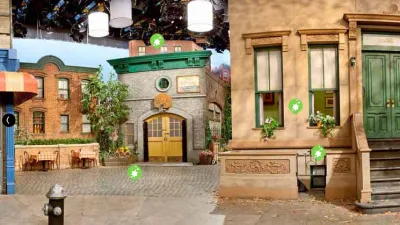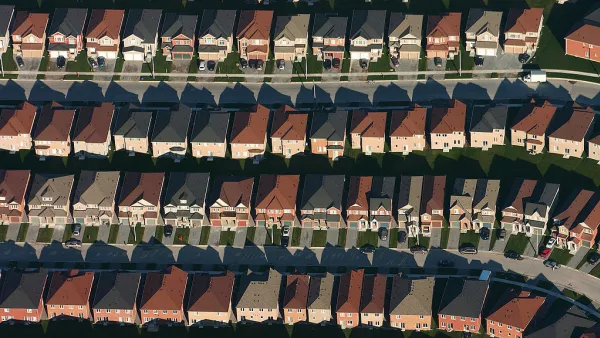At the height of America's suburban expansion, a children's show premiered that was set in a dense urban environment. Steve Patterson wonders if the young adults now embracing urban lifestyles learned to love cities by watching Sesame Street.

Patterson has a very personal take on his experience watching the influential children's television series Sesame Street, but wonders if that perspective is shared by other adults of his generation that grew up in the suburbs. After all, notes Wikipedia, "In 2008, it was estimated that 77 million Americans had watched the series as children."
"My family moved into a brand new home in suburban Oklahoma City just months before I was born. Our subdivision lacked sidewalks, we had a 9-car driveway (3×3)," writes Patterson. "Watching Sesame Street though, I knew there was another way to live. I’m not sure when I got too old for Sesame Street, but the images of the conversations on the front stoop stayed in my memory. Looking back, I think Sesame Street gave me a very positive image of urban neighborhoods."
Though some of those commenting on his post disagree with Patterson's premise, early results of an accompanying poll tend to support the ubiquity of his experience.
FULL STORY: Poll: How Did Sesame Street Influence Your Childhood Perceptions of Urban Neighborhoods?

National Parks Layoffs Will Cause Communities to Lose Billions
Thousands of essential park workers were laid off this week, just before the busy spring break season.

Retro-silient?: America’s First “Eco-burb,” The Woodlands Turns 50
A master-planned community north of Houston offers lessons on green infrastructure and resilient design, but falls short of its founder’s lofty affordability and walkability goals.

Delivering for America Plan Will Downgrade Mail Service in at Least 49.5 Percent of Zip Codes
Republican and Democrat lawmakers criticize the plan for its disproportionate negative impact on rural communities.

Test News Post 1
This is a summary

Test News Headline 46
Test for the image on the front page.

Balancing Bombs and Butterflies: How the National Guard Protects a Rare Species
The National Guard at Fort Indiantown Gap uses GIS technology and land management strategies to balance military training with conservation efforts, ensuring the survival of the rare eastern regal fritillary butterfly.
Urban Design for Planners 1: Software Tools
This six-course series explores essential urban design concepts using open source software and equips planners with the tools they need to participate fully in the urban design process.
Planning for Universal Design
Learn the tools for implementing Universal Design in planning regulations.
EMC Planning Group, Inc.
Planetizen
Planetizen
Mpact (formerly Rail~Volution)
Great Falls Development Authority, Inc.
HUDs Office of Policy Development and Research
NYU Wagner Graduate School of Public Service




























